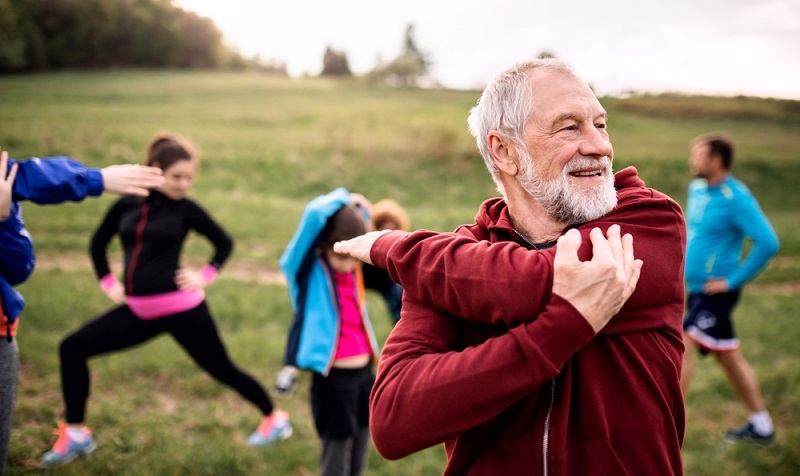Learn About Different Types Of Stroke And Their Effects

Stroke is a terminal medical condition that has devastating effects on people and their families. The common occurrence of stroke is when the blood supply to the brain is disrupted, either due to a blockage or bleeding in the brain. Stroke could be a leading cause of long-term disability and under critical scenarios, it can also be a cause of death. Understanding the stroke causes, symptoms, and diagnosis strategies increases the chances of stroke prevention, early detection, and effective management. Below is the information to explore everything you need to know about stroke:
Different Types of Stroke:
There are two main types of stroke: ischemic and hemorrhagic.
- Ischemic strokes account for approximately 87% of all strokes and their stroke symptoms are blood clot-blocking blood vessels in the brain. The clot may form in the brain (thrombotic stroke) or travel from another part of the body to the brain (embolic stroke).
- Hemorrhagic strokes, on the other hand, have stroke symptoms like weakened blood vessel bursts, leading to bleeding in the brain. Such stroke causes occur due to conditions such as high blood pressure, aneurysms, or arteriovenous malformations. It is important to note that both types of stroke require immediate medical attention.
Stroke Causes and Risk Factors:
There are several medical conditions and factors that can increase the risk of stroke causes. Some of the common risk factors include high blood pressure, smoking, obesity, diabetes, high cholesterol levels, atrial fibrillation (an irregular heartbeat), family history of stroke diagnosis, and age (the risk increases with age). Lifestyle choices such as a sedentary lifestyle, excessive alcohol consumption, and illicit drug use can also contribute to the risk of stroke. It is important to manage these risk factors through regular check-ups, adopting a healthy lifestyle, and following medical advice. Avoidance of these factors and ignoring their effects on the body can make it difficult for you to achieve stroke prevention.
Recognizing the Stroke Symptoms:

Recognizing stroke symptoms is crucial for successful stroke treatment. This step can help you in seeking immediate medical attention, as early stroke treatment can minimize brain damage and improve outcomes. Common stroke symptoms include sudden numbness or weakness in the face, arm, or leg (usually on one side of the body), confusion, trouble speaking or understanding speech, severe headache with no known cause, difficulty walking, dizziness, and loss of balance or coordination. It is important to act quickly if any of these symptoms occur. Remember the acronym FAST: Face drooping, Arm weakness, Speech difficulty, Time to call emergency services.
Stroke Diagnosis and Treatment:
If you think a stroke is suspected, immediate medical intervention is vital to make the necessary measures in time. Doctors may conduct various tests to determine the type, location, and extent of the stroke. These tests include a physical examination, blood tests, imaging tests (such as a CT scan or MRI), and a cerebral angiogram.
Stroke treatment options depend on the type of stroke and may include medications to dissolve blood clots (in the case of ischemic stroke), surgical intervention to repair ruptured blood vessels (in the case of hemorrhagic stroke), and rehabilitation to regain lost functions and prevent complications. The specific stroke treatment plan will be determined by the healthcare team based on the individual's condition and needs.
Stroke Prevention and Lifestyle Modifications:

Stroke prevention involves making positive lifestyle choices and managing underlying health conditions. Some of the stroke prevention methods include maintenance of the blood pressure. This can be attained through a regularized diet like avoiding too much salt, exercise, and necessary medication if prescribed.
Smoking and alcohol consumption is direct damage to the heart and the brain if you are suffering from stroke symptoms. Prohibiting these habits like smoking and drinking reduces the risk of an aggravated situation that could lead to death. Diabetes is an important stroke symptom and monitoring it could save you from any sudden happening. Regular checks, medicating yourself, and balancing your diet if you are a diabetic individual, could help you in stroke prevention.
Keeping the cholesterol levels in check is also one of the best ways of stroke prevention. This happens when you begin eating a healthy diet that avoids fatty food intake like oils. If you are suffering from serious cholesterol conditions, then regularly consuming the prescribed medication will also help you be safe. Additionally, having an active exercise routine for about 2 hours every day is proven to keep you safe from all types of conditions. If you have atrial fibrillation, follow your doctor's instructions regarding medication, monitoring, and lifestyle modifications.
Conclusion:
It is extremely important to keep you safe from a life-threatening condition that can have severe consequences if not addressed promptly. Remember, time is of the essence when it comes to stroke, so it is crucial to act quickly and seek immediate medical attention if any symptoms arise. By spreading awareness and promoting a healthy lifestyle together we can survive the storm by overcoming the challenges of stroke where they are prevented, and treated effectively, and their impact minimized. Let us all take a proactive approach toward stroke prevention and become advocates for a healthier society. Together, we can make a difference.
This content was created by AI
-1717753922-r.jpg)